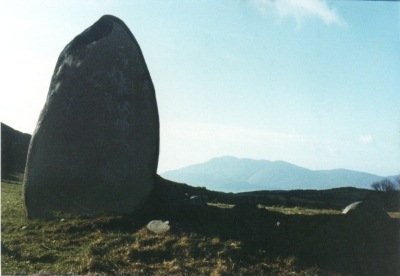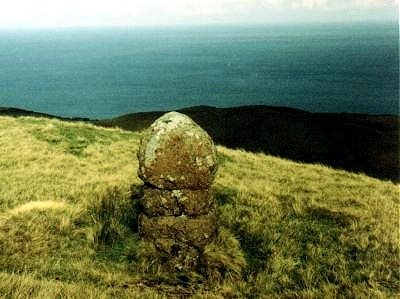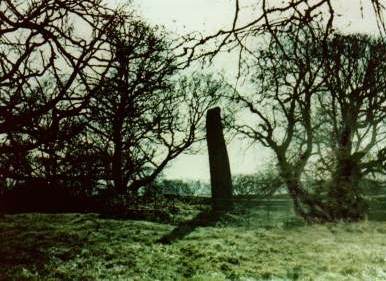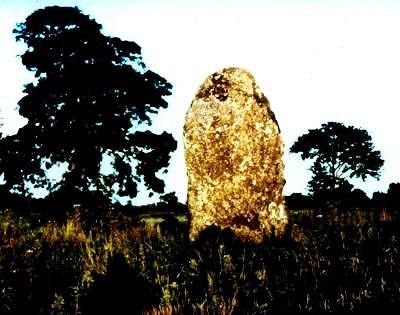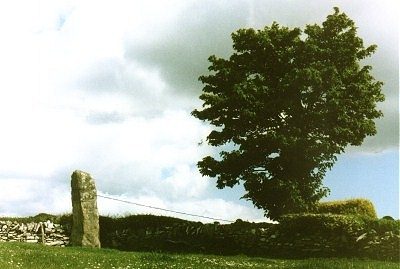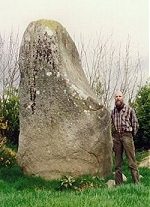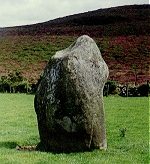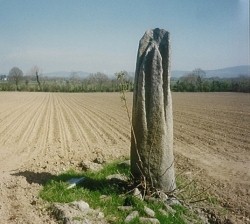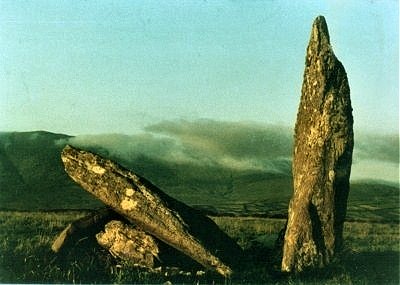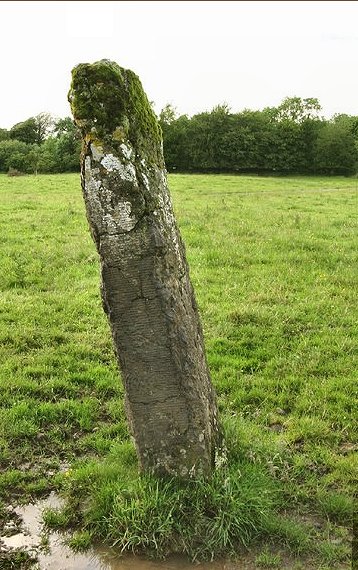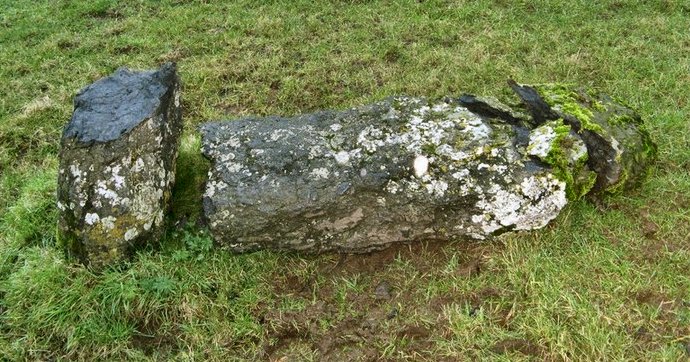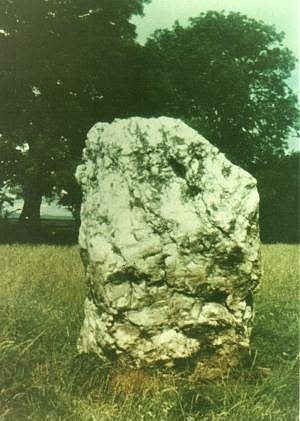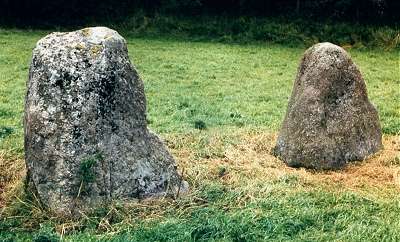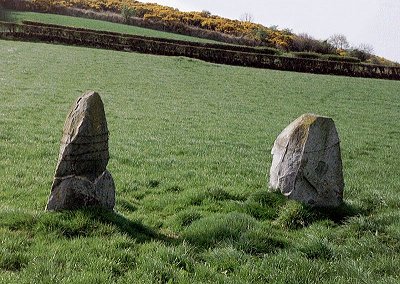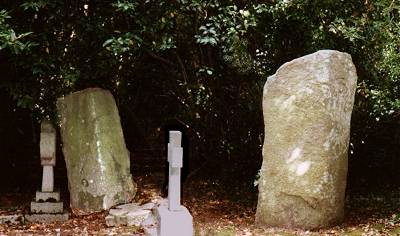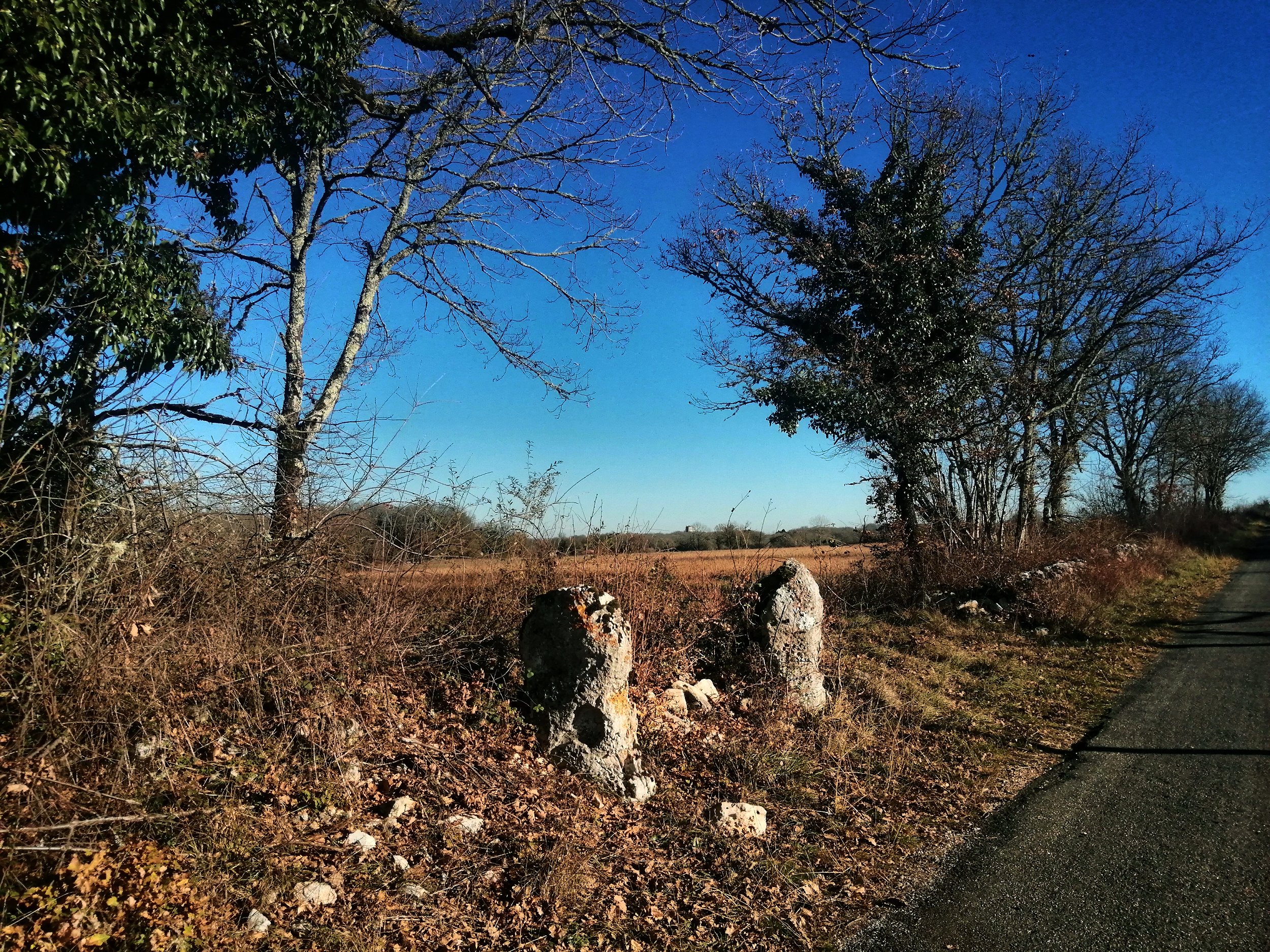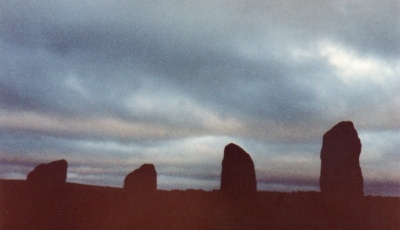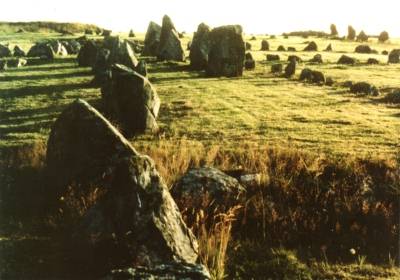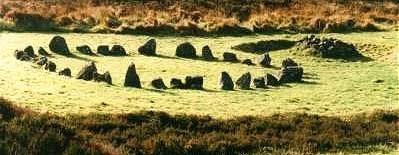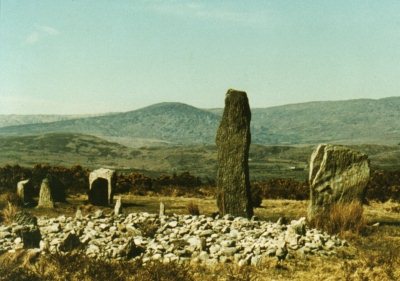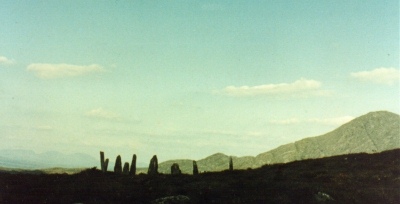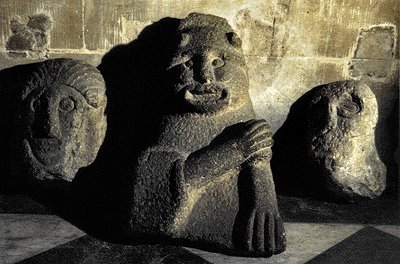|
the
earth-mother's
|

PILLAR-STONES
OGAM STONES
& CROSS-PILLARS
"Cloghadda" or The Long Stone, Tamnaharry,
county Down
_________________________
photographs and text by
Anthony Weir
_________________________
|
The landscape
of Ireland (littered with so much else) * Menhir
is an antiquarian fake-Breton word for 'long stone' [compare Cloch
Fháda in Irish] - the actual Breton for menhir being
Peulvan or 'stone pillar'.
Cloghstuckagh, Moyvoughly, county Westmeath "Cloghstuckagh" means 'prominent stone'. Not all
stones are ancient: some were erected in the Christian period
and were decorated with Christian (or
perhaps non-Christian) motifs - and some were erected
in the 18th and 19th centuries as Scratching-posts for cattle.
On the other hand, one in County Down which is touchingly held
steady by a steel hawser wrapped round a tree marked a Bronze
Age burial of burnt bones.
Carrownacaw, county Down
click
on the thumbnail for a high-resolution photo Some of these are very likely the last stone of a portal-tomb to survive - the removal of which might well have brought ill-luck at the very least. This is likely in the case of "The Long Stone" at Ballybeen, and "Cloghmore" at Tamnaharry, county Down.
But others
were obviously erected because of existing characteristics,
Ardristan, county Carlow
Graigue, county Kerry
Alignments or Stone-rows are also numerous.
The stone circles associated with alignments are usually of small stones; at Beaghmore some are only a few centimetres high.
At Kealkil, as at Beaghmore, the alignment and circle are also accompanied by a circular low heap of stones. Circles of tall stones, being sufficiently prominent, do not have associated alignments. But sometimes, as at Ardgroom Outward, they may have one or more outlier.
When ogam writing was introduced to Ireland from Wales, just before Christianity arrived, some long-standing stones were used for inscriptions which were mostly memorials of named people. The word 'ogam' is derived from Oigmiú, the smith-god who became the script-god. Another aspect of the smith-god is Nuadú of the silver arm (and horned helmet) whose statue (formerly in Armagh Cathedral) is a motif of these pages.
|

